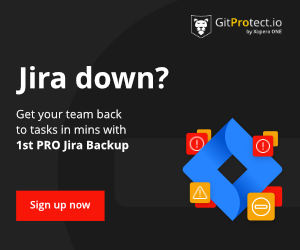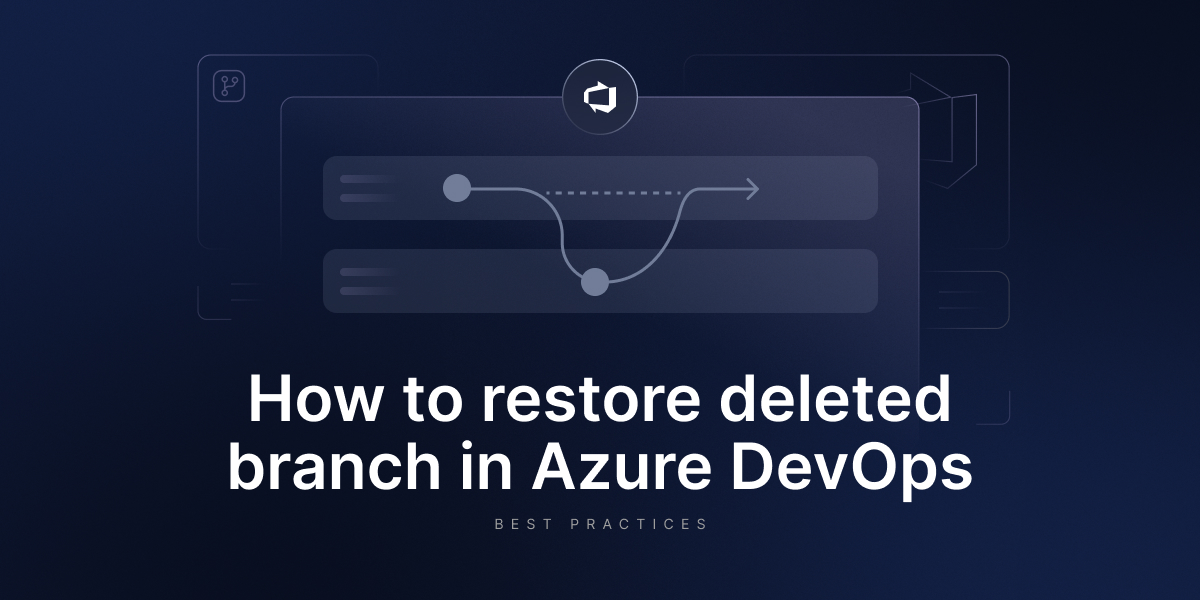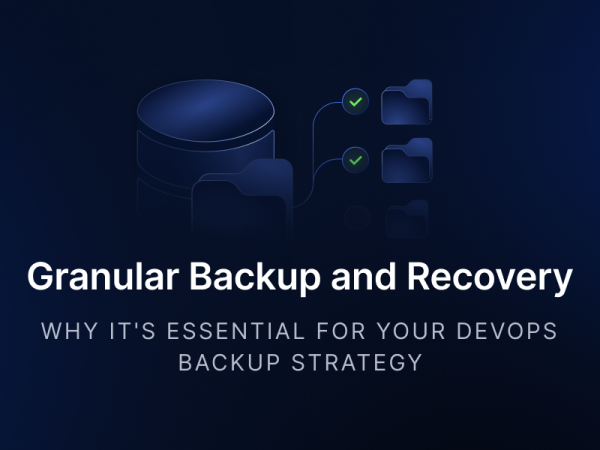
Jira Migration Pros & Cons and Security Measures
Recently the topic of Jira migration has become very popular. This is due to the fact that Atlassian is no longer selling server licenses, as in February 15th, 2024 the support was discontinued, hence the need to migrate projects. Current customers must choose between Atlassian Cloud and Atlassian Data Center.
What features does Jira Cloud offer that Jira Server does not? In the following article, we will discuss the benefits and downsides of the Jira migration and show you the key differences between Atlassian Cloud and Data Center options. Before you make the decision to relocate the company’s software, you need to know the process and security-related best practices during a Jira server data migration, and do it with minimal disruption.
Jira migration – what is it for?
The main reason for this blog post is to highlight the ins and outs of the migration journey. Jira administrators should be aware of the deployment choices, such as Cloud and Data Center. While Jira Cloud can be useful in situations where you don’t have a server to store data, Data Center becomes desirable for enterprise-level companies with big budgets.
Jira Products: Jira Cloud vs. Data Center
There are several differences between Jira Cloud and Jira Data Center, which we will discuss in this section. Let’s begin with Jira Cloud.
Jira Cloud
Jira Cloud does not require you to install or maintain components on your own servers. The user is not responsible for the management, hosting, or infrastructure. This also assumes system updates and taking care of security. Consequently, you save on physical hardware and other expenses. If you opt for this solution, migrating your organization from Jira Server to a cloud environment is the best option. The cloud provides a flexible subscription plan and quick access to the latest features.
Strengths of Jira Cloud
In addition to the ease of setup and lower maintenance costs, Jira Cloud offers several features that make it a suitable choice for modern businesses. Notably, Jira Cloud is highly scalable, accommodating the growth of your team or project needs without the need for manual infrastructure expansion. This scalability ensures that businesses can adapt quickly to changing requirements.
Furthermore, Jira Cloud is designed with cost-effectiveness in mind. The subscription-based model eliminates the need for upfront investments in hardware and reduces ongoing expenses related to server maintenance. This makes it an economical choice, especially for small to medium-sized businesses.
Security is a main concern in the context of the digital world, and Jira Cloud addresses this with additional security features. It provides advanced data encryption and regular security updates; therefore, your sensitive data is well-protected against emerging threats. These security measures are managed by Atlassian, relieving your team of the burden of constant vigilance and allowing them to focus on core activities.
Another significant advantage of Jira Cloud is that it’s remote-friendly. With the increasing trend towards remote work, having a cloud-based platform helps team members to collaborate effectively from any location. This feature is valuable for distributed teams and organizations that embrace a flexible working environment.
Jira Data Center
Jira Data Center is an ideal solution for large-scale enterprises due to its high scalability, effectively supporting organizations with at least 500 users, or many more, and robust security features. It’s particularly suitable for organizations that have stringent compliance requirements.
A closer look at Jira Data Center
For organizations in the healthcare sector, HIPAA compliance is a critical requirement. Jira Data Center’s ability to support HIPAA-compliant operations is a significant advantage, as it ensures the necessary safeguards are in place to protect sensitive patient health information.
Additionally, for enterprises that prioritize data encryption and security, BYOK (Bring Your Own Key) compliance is important. Jira Data Center offers support for this level of security, allowing organizations to maintain control over their encryption keys and thereby their data security.
FedRAMP compliance is another crucial factor for organizations working with the US federal government. Jira Data Center’s compatibility with FedRAMP standards means it is equipped to handle the specific security requirements necessary for federal contracts and data protection.
Moreover, Jira Data Center offers flexible deployment options, including the ability to be hosted on an organization’s own hardware or through Infrastructure as a Service (IaaS). This flexibility, combined with robust security features, makes it an excellent choice for large enterprises that need a customizable and secure environment for their projects requiring additional hardware. However, scaling Jira Data Center for higher demand and reliable uptime may require extra hardware resources.
Pros & Cons of Jira Data Center
Jira Data Center is designed for organizations needing a self-managed, scalable environment with advanced control over infrastructure and security. While it offers powerful benefits for enterprises with complex demands, it also brings added responsibilities and costs.
The overarching advantages of Jira Data Center are:
- Performance & Scalability: Jira Data Center is built to handle the demands of large, distributed teams by offering a clustered architecture that supports high availability and performance under load. It includes features like zero-downtime upgrades, issue and project archiving, and CDN support to ensure speed and responsiveness, even during peak usage or maintenance.
- Enterprise-Grade Security Compliance: Jira Data Center supports secure authentication methods such as SAML and OpenID Connect. It also offers advanced auditing tools that help track user activity, enforce compliance, and maintain visibility into system access.
- Flexible Infrastructure: Organizations have the flexibility to deploy Jira Data Center on-premises or through cloud providers like AWS and Azure. This allows teams to align their deployment with existing infrastructure strategies and easily scale resources without vendor lock-in.
- Additional Built-In Features: Jira Data Center includes several enterprise-grade features and apps—such as Advanced Roadmaps for Jira & Team Calendars for Confluence — that were previously sold separately. These built-in tools support complex workflows and help teams manage large-scale projects more efficiently.
The disadvantages also need to be considered before you opt for the Data Center deployment:
- Higher Total Cost: Unlike simpler deployments or the cloud, the need for maintenance, performance tuning, and high availability drives up the total cost of ownership. Handling upgrades (even with zero-downtime options) requires dedicated teams, which requires more resources.
- Advanced Settings & Operations: Managing the environment demands specialized IT skills and resources to set up and maintain components like load balancers, node management, and disaster recovery.
- Unfit for Smaller Teams: Data Center can only work for large-scale environments that feed on complexity; otherwise, those advanced features are an overkill for small teams.
Jira Server to Data Center instance migration
Transitioning from Jira Server to Data Center is a crucial step for businesses looking to scale their operations and enhance performance. Let’s analyze the migration process, ensuring a smooth transition of the existing data to maintain data integrity, minimize downtime, and leverage the advanced capabilities of Jira Data Center.
- Pre-migration planning: Conduct a detailed analysis of your current Jira Server environment. This involves assessing the size of your instance, the number of projects, custom fields, users, and third-party apps. Check the compatibility of these apps with Jira Data Center. Carefully plan your migration timeline and clearly communicate important dates to all stakeholders to ensure readiness for production migration and minimize disruption.
- Infrastructure setup: Ensure your infrastructure meets the requirements for Jira Data Center. Configure a shared home directory accessible to all cluster nodes, separate from local home or install directories. Set up a load balancer with session affinity to route user sessions to the correct server, ensuring consistent resource access. Ensure the infrastructure supports high loads and continuous uptime for availability. Use a database that supports clustering.
- Data backup and test migration: Perform a complete backup of your Jira Server instance, including the database, attachments, and application data. Ensure the backup includes all server-to-Jira data. If needed, upgrade your Jira application or plugins before production migration. Consider running a test migration on a staging environment to identify potential issues.
- Migration execution: Use the Jira Server to Data Center migration plan, which typically includes data transfer and application setup. Ensure all configurations and customizations are replicated in the Data Center environment. Before starting, obtain a valid Data Center license or trial license for your Jira application. If a full license isn’t purchased after the trial, Jira will switch to read-only mode, allowing data access without edits. Ensure all configurations and customizations are replicated in the Data Center environment. If you encounter a license mismatch during migration, confirm that the license type aligns with your Jira application version to prevent errors.
- User management and permissions: Migrate user accounts and groups. Implement strict API token controls to strengthen security. Pay special attention to permissions and roles to ensure a seamless transition for end-users.
- Post-migration reports and validation: Conduct comprehensive testing in the Data Center environment. Conduct user acceptance testing to confirm data integrity, application functionality, and performance. Involve stakeholders to validate the migration and secure their approval. Validate data integrity, application functionality, and performance. This is crucial to ensure that all aspects of your Jira instance work as expected.
- Monitoring and optimization: Once the migration is complete, the final step is to continuously monitor the system for any performance issues or bugs. Regularly perform upgrades to keep your system up to date. Use Advanced Roadmaps, included with Jira Data Center, to improve project planning and Jira service management. Optimize configurations as necessary to ensure the Data Center operates efficiently.
Pros & cons of migrating to Jira Cloud
Before you decide to migrate to Jira Cloud, you need to know its advantages and disadvantages. Below we present the most important ones.
Jira Cloud migration strategy: why do it?
Advantages
Jira cloud migration has several benefits; let’s take a closer look at them.
Ease of getting started
Jira Cloud’s setup process is streamlined and user-friendly. You can quickly initiate your Jira Cloud journey by registering on the Atlassian platform, a process that takes just a few minutes. Once registered, inviting your team members to collaborate is straightforward to enable a rapid transition to productive work.
Cost efficiency
Opting for Jira Cloud leads to significant cost savings. By leveraging a cloud-based solution, you eliminate the financial burden associated with maintaining physical servers, whether managed in-house or outsourced. Additionally, you save on costs related to installation and ongoing support, making Jira Cloud a more budget-friendly choice, particularly for businesses looking to minimize IT overhead.
Automated updates
With Jira Cloud, staying current is effortless. The platform automatically updates to the latest version, ensuring your team always has access to the newest features and security enhancements. This automatic update mechanism relieves your company from the task of manual software updates and license management.
Scalability
Jira Cloud’s scalability is a key advantage. As your business grows and demands increase, Jira Cloud can easily scale up to meet these new requirements. This flexibility ensures that your project management capabilities can evolve in tandem with your business, without the need for extensive infrastructure changes.
Integration with Atlassian suite
Jira Cloud integrates seamlessly with other Atlassian products like Jira Software, Confluence and Bitbucket. This integration enhances overall productivity and collaboration within teams. Additionally, due to its simplified admin functions and robust security, Jira Cloud offers a secure environment, reducing the risk of sensitive process breaches.
Simplified training
The user interface of Jira Cloud is intuitive and accessible, simplifying the training process. With a uniform version used by all users and its increasing popularity, training new team members becomes more straightforward. This simplicity positions Atlassian Cloud as a future-proof solution, aligning with the trend of reduced reliance on server-based systems.
Advanced configuration and industry-specific needs
Jira offers the potential for advanced configuration, enabling the system to meet a wide range of industry-specific requirements and support diverse business operations. This adaptability is a significant advantage for companies with specialized needs or those operating in niche sectors.
Experience in application maintenance
Organizations with a team experienced in software maintenance might prefer in-house management of Jira. This choice can be advantageous for companies that have the necessary expertise and resources to handle complex software environments independently.
Hosting and configuration autonomy vs. responsibility
Choosing to host Jira on an in-house or external server provides greater autonomy and a broader scope for configuration, catering to specific business needs. However, this approach also brings increased responsibility. Clients who opt for this method must undertake the implementation, configuration, and maintenance of the system themselves or outsource these tasks to a third-party service provider. This decision requires a careful balance between the desire for customization and the readiness to manage the accompanying technical demands.
Disadvantages
Let’s move on to the disadvantages now.
User count & scalability in Jira Cloud
While Jira Cloud is highly scalable, it is important to note its user limit. Officially optimized for up to 100,000 users. For those needing to support more users, discussions with Atlassian are recommended to customize the cloud environment to the specific scale and needs of the enterprise. This flexibility allows Jira Cloud to cater to larger organizations, though it may entail additional planning and customization for optimal performance.
Data storage constraints and local hosting
Companies requiring local data storage due to regulatory or operational reasons often choose to host Jira on their own servers or through third-party services in the same region. This approach ensures compliance with data residency requirements and can offer enhanced control over data management.
Total cost and time considerations for initial changes
Initiating the first set of changes in Jira, such as migration or significant workflow modifications, can be time-consuming and should be managed as a dedicated project. Atlassian provides free migration support for existing server users, which can be valuable for navigating complex and sensitive workflows. Coordinating closely with Atlassian during this phase can facilitate a smoother transition and minimize potential disruptions.
Jira Cloud Migration Assistant
A critical tool in the migration process is the Jira Cloud Migration Assistant. Developed by Atlassian, this free tool simplifies the transition from Jira Server or Data Center to Jira Cloud. It provides a user-friendly interface to select specific data for migration and offers the flexibility to initiate the migration at a convenient time. Key features include:
- App assessment: It helps in evaluating cloud app availability and migration paths.
- Selective migration: You can choose to migrate multiple projects, including users and groups.
- Real-time tracking: The tool offers the ability to monitor the progress of the migration in real-time.
- Data integrity: Ensures that data is not overwritten or duplicated during migration.
- Staged migration: Supports phased migration to avoid duplication if using different migration methods.
The assistant supports data migration of the following products:
- Jira Core
- Jira Software
- Jira Service Management
- Advanced Roadmaps (projects plans with linked issue resources & single-project boards)
You can migrate the following types of data:
- active & archived projects and issues
- users and groups, including external user groups (e.g., your clients that track delivery)
- Advanced Roadmaps plans
- Jira Software boards & sprints
- Workflows & filters
Incorporating the Jira Cloud Migration Assistant in your migration strategy can significantly streamline the process, ensuring a more efficient and controlled transition to Jira Cloud.
Security measures for migration to Jira Cloud
Essentially, in order to successfully and securely migrate to the Cloud, there are several key steps to follow to ensure that the migration complexity is not a stumbling block. We will explore migration strategy milestones below.
Pre-migration checklist
Pre-migration planning is a key phase in the Jira migration process, laying the groundwork for a smooth transition. Key steps include:
- Assessing current applications: Evaluate all applications currently in use for compatibility with the cloud environment. This helps identify which applications can be migrated directly and which may need alternatives or updates.
- Backups: Back up all critical data before migration to safeguard against potential data loss from errors or server issues.
- Compatibility checks: Ensure that the current version of Jira Server or Data Center is compatible with the cloud version. This includes checking versions of integrated applications and plugins.
- Non-production environment testing: Before executing the actual migration, test the process in a non-production environment. This step is crucial to identify and resolve any issues that might disrupt the migration, reducing the risk of data loss or downtime.
- User and data mapping: Map out how users and data will be transferred. This ensures that all necessary information is migrated correctly and that user access is maintained throughout the transition.
Incorporating these pre-migration steps ensures a comprehensive preparation phase, essential for a successful migration from Jira Server or Data Center to Jira Cloud.
Post-Migration Checks
After migrating to Jira Cloud, conducting thorough post-migration checks is crucial to ensure a successful transition:
- Verify data integrity: Ensure all critical data has been transferred accurately and is accessible.
- Check application functionality: Confirm that all applications and integrations are functioning correctly in the new environment.
- User access validation: Make sure that all users have appropriate access levels and that their settings are correctly configured.
- Performance assessment: Evaluate the system’s performance to identify any issues that might have arisen post-migration.
- Feedback collection: Gather feedback from users to identify any challenges they face, and address these promptly to ensure smooth operation.
These checks are vital for confirming the migration’s success and for quickly resolving any issues, ensuring a seamless transition for all users.
All of these are important to successfully transition Jira to another environment. A good plan and preparation should include backing up your team’s data. This will reduce your risk and prevent disaster if something goes wrong. Use reliable tools such as GitProtect Jira Backup to minimize the risk of losing valuable files or learn more about Jira backup best practices.
Common data migration challenges
Migrating to Jira Cloud or Data Center presents unique challenges, particularly in the context of data mapping and user management. To successfully overcome these challenges a methodical approach is recommended, including comprehensive data audits and rigorous testing in a staging environment.
Migrating Jira instances requires attention to detail to make sure that all data, including custom fields and workflows, is accurately transferred, and user roles are correctly reassigned in the new environment.
Total cost considerations
The transition to Jira Cloud brings with it a shift in cost structures. Moving away from on-premise servers to a cloud-based solution can lead to significant savings in hardware and maintenance expenses. The Jira Cloud operates on a subscription model, offering various tiers to accommodate different organizational sizes and needs. This model allows for predictable budgeting, with costs scaling in line with usage and organizational growth.
Security measures in detail
Security in Jira Cloud and Data Center is important, especially for organizations handling sensitive data. Jira Cloud offers some security features, including data encryption and compliance with standards like HIPAA, BYOK, and FedRAMP. These measures are made for large organizations that demand high levels of data protection and need to meet strict regulatory standards.
Data migration support & resources
Atlassian provides support throughout the Jira migration process. This includes access to detailed documentation, migration tools, and customer support options. Organizations can leverage these resources to facilitate a smooth transition, with minimal downtime and disruption to ongoing operations.
Still can not decide which Jira deployment to choose? Check our extensive Jira Cloud vs. Jira Data Center comparison guide.
Integrate GitProtect.io
As a final note, tools like GitProtect.io align well with the aspects of Jira migration, offering solutions like AES encryption and compliance with SOC 2 and ISO 27001. GitProtect.io can contribute to cost-efficiency by minimizing potential data loss-related costs, ensuring data integrity, and complementing Atlassian’s resources with robust backup and disaster recovery solutions after migration. This makes it a valuable consideration for organizations seeking the highest level of data protection and continuity assurance.
User migration strategy: key steps
A clear user migration strategy is crucial for a smooth transition from Jira Server to Jira Data Center or Jira Cloud. Proper planning ensures all users, permissions, and access controls are preserved, minimizing disruptions and maintaining productivity during the migration.
Key steps for an effective user migration strategy include:
- User Acceptance Testing (UAT): Conduct thorough testing before going live to confirm all user accounts, permissions, and workflows work as intended. Getting approval from key stakeholders boosts confidence in the migration’s success.
- Migration Timeline Planning: Work with stakeholders to set a detailed migration schedule, defining specific dates for each migration phase. This coordination helps allocate resources and reduces operational impact.
- Early Communication: Inform all users about the migration timeline and affected projects ahead of time. Early communication allows users to prepare for any temporary downtime or changes and sets clear expectations.
- External User Management: If you use external directories or third-party identity providers, ensure these users are included in the migration plan and verify compatibility with the new Jira environment.
- User Data Migration: Migrate all user data — such as roles, group memberships, and permissions — to maintain uninterrupted access and security in the new system.
Migrating Jira Service Management — key considerations
Migrating Jira Service Management from Jira Server to Jira Data Center or Jira Cloud requires a well-structured approach to maintain service continuity and ensure data integrity. The process involves key steps specific to Jira Service Management’s needs:
- Data Center Version Compatibility: Before migrating, confirm that your Jira Data Center version fully supports Jira Service Management. This guarantees that all features and integrations will work properly after migration.
- Test Migration for Risk Mitigation: Perform a test migration in a non-production environment to detect and fix issues early. This helps identify data mapping problems, plugin compatibility, and workflow inconsistencies before the live migration.
- Setting Up the Data Center Instance: If you’re moving from a server to a Jira Data Center instance, prepare your Jira Data Center environment to support Jira Service Management: configuring essential infrastructure components such as load balancers and external databases, ensuring performance and security standards are met.
- User Migration Strategy for Service Management: Create a detailed user migration plan that covers both customers and agents. Accurately migrate user accounts, permissions, and external user management integrations to maintain smooth service desk operations.
- Post-Migration Reports & Validation: After the production migration, review comprehensive reports to verify that all data — tickets, custom fields, and workflows — has been correctly transferred. Address any issues immediately to avoid service disruption.
Summary: Data Center or Jira Cloud?
The pros and cons of Jira migration are really subjective. This article has provided a comprehensive overview of what to expect during the migration process, including insights into the unique features, security measures, and support available for Jira Cloud and Data Center.
Ultimately, understanding these various aspects will enable you to make an informed decision, ensuring a smooth transition to an appropriate and efficient Jira environment.
[FREE TRIAL] Ensure compliant backup and recovery of critical Jira data with a 14-day trial 🚀
[CUSTOM DEMO] Let’s talk about how Jira backup & DR software can help you mitigate the risks
The article was originally published on July 6th, 2022








